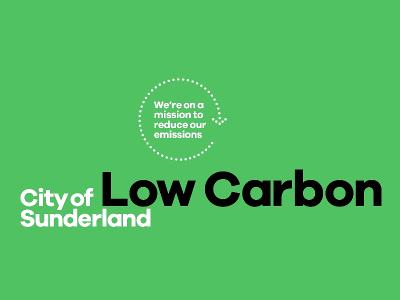Our Progress

Sunderland City Council declared a climate emergency in 2019. This declaration committed Sunderland to reduce its citywide emissions and help global temperature rise stay well below 2.0°C, and pursuing 1.5°C by 2050, in-line with the Paris Agreement of 2015. As part of the declaration, Sunderland's central aim is to become carbon neutral by 2040 and to achieve net-zero greenhouse gas emissions by 2045.
To align as closely as possible with the Paris Agreement, Sunderland had a target to reduce annual citywide emissions by 16.1% by 2020 from 2015 levels, which it exceeded with emissions reduced by 26.1%. Following this, Sunderland must now reduce emissions by 14.4% year-on-year. These goals have been adopted based on science-based recommendations from the Tyndall Centre.
Sunderland City Council's low carbon ambitions for its own operations are to achieve carbon neutrality and net-zero greenhouse gas emissions by 2030.
Annual Carbon Data Report 2023/24
The City Council publishes an Annual Carbon Report. The most recent report (PDF, 984 KB) provides an estimation for the annual greenhouse gas (GHG) emissions for Sunderland City Council in the 2023/24 financial year as well as citywide carbon emissions for Sunderland in the 2022 calendar year (the latest for which citywide data was available at the time).
In 2022, Sunderland emitted a net 1.046 million tonnes of CO2. This represents a 4.9% decrease from 2021 levels. It is important to note that emissions in 2020 - 2022 were significantly influenced by COVID-19.
Between 2019 (the most recent year that data is available that is not impacted by COVID-19) and 2022, Sunderland reduced its overall CO2 emissions by 11.7%. These reductions remain better than the overall North East and UK averages of 11.4% and 9.8% respectively. Furthermore, since 2015 (Sunderland's citywide baseline for carbon emissions) and 2022, Sunderland reduced its overall CO2 emissions by 27.1%. These reductions are also better than the overall North East and UK averages of 23.4% and 22.8% respectively.
The city is not currently on track to meet its second recommended interim target of a 61.5% reduction against a 2015 baseline by 2025 (which is aligned with a 14.4% annual reduction). If this is to be achieved by 2025, the city must reduce annual emissions rapidly over the forthcoming years. Sunderland did however meet its first interim recommended 5-year carbon budget period target, producing 0.3 MtCO2 less than the target of 5.8 MtCO2 between 2018 - 2022 (aligned with the city's carbon budget calculated by the Tyndall Centre of 8.2 MtCO2 between 2020 - 2100). This is in part due to emissions reductions targets being exceeded in previous years.
The main causes of citywide CO2 emissions in Sunderland in 2022 were domestic energy (33%) and transport (32%). Emissions from most sectors have reduced since the citywide baseline in 2015 (with only the agricultural sector increasing), albeit each sector is experiencing different rates of emissions reduction. Since 2015:
- Emissions from industrial energy decreased by 32%
- Emissions from commercial energy decreased by 42%
- Emissions from the public sector decreased by 34%
- Emissions from domestic energy decreased by 27%
- Emissions from transport decreased by 17%
- Emissions from agriculture increased by 28%
- Emissions from waste management decreased by 0.4%


CDP
In September 2024 Sunderland disclosed its citywide environmental data to CDP, to measure and understand Sunderland's environmental footprint and progress on climate action. Sunderland was 1 of 25 UK cities, and one of 112 globally, to be awarded an 'A' rating and 'leadership' status for the ambition of its citywide mitigation and adaptation efforts.
This is Sunderland's fourth 'A' rated CDP disclosure, following previous disclosures in 2021 - 2023. Our CDP report for 2024 can be found here (PDF, 1 MB) and historic CDP reports can be found on the CDP website. The Low Carbon Team is currently working on the 2025 disclosure which is due to be submitted in September.

One Planet City Challenge (OPCC)
In 2024 Sunderland joined hundreds of other cities in the WWF (World Wildlife Fund) One Planet City Challenge to better understand if the city is doing enough to meet its climate ambitions. Through the challenge, the WWF assessed Sunderland's vision and actions towards climate change mitigation and adaptation against the goals of the Paris Agreement to determine whether Sunderland is making its fair contribution to help to limit global warming to 1.5°C.
For 2024, Sunderland has been named a global winner of the One Planet City Challenge (OPCC) 2024. This prestigious international award recognizes cities leading the way in climate action. Competing against 359 cities from 48 countries, Sunderland impressed a panel of expert judges with its innovative climate solutions. This victory highlights the city's commitment to a sustainable future and its role as a global leader in climate action.
Quarterly Reports
The Council is committed to reporting its operational emissions on a quarterly basis. Read our most recent quarterly reports:




